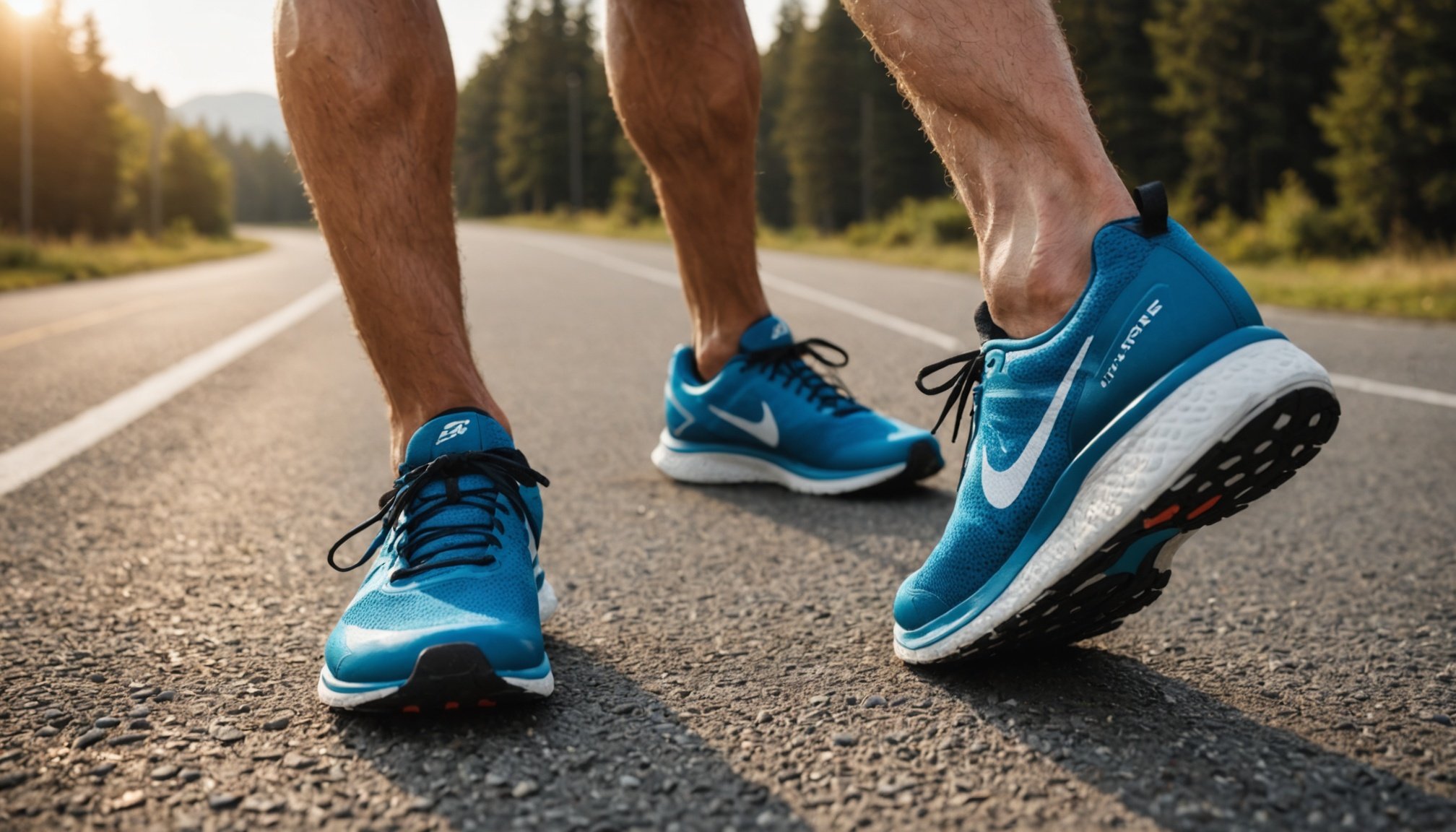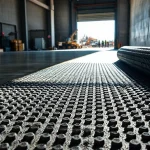Overview of High-Tech Insole Sensors
Insole sensors represent a remarkable leap in running technology, offering insightful data on a runner’s biomechanics. These smart insoles are embedded with advanced capabilities, such as pressure and motion detection, providing real-time feedback. Historically, insoles have evolved from simple cushioning aids to sophisticated devices that monitor a runner’s every step.
Initially designed for basic comfort and support, insoles have undergone significant technological advancements. Early prototypes merely focused on mitigating impact, whereas today’s smart insoles integrate with mobile applications to offer comprehensive analyses of running patterns. The transition from simple materials to intricate sensor technology marks a pivotal shift in enhancing athletic performance.
In the same genre : Revolutionizing competitive rowing: how augmented feedback devices maximize stroke efficiency and performance
The technology employed today encompasses sensitive pressure sensors that capture detailed data about foot movement and force distribution. These sensors are interconnected with user-friendly software interfaces, enabling athletes to assess their form and make necessary adjustments. Furthermore, smart insoles provide analytics that aids in injury prevention by identifying flaws in gait and posture. Through such innovations, high-tech insole sensors are redefining the landscape of sports technology and athlete training.
Benefits of High-Tech Insole Sensors for Runners
High-tech insole sensors offer significant advantages in enhancing running performance. By aligning with biomechanics, they provide precise data to improve running form and technique. Leveraging real-time feedback, these sensors furnish runners with actionable insights, enabling adjustments to stride patterns and posture that lead to efficiency gains.
Have you seen this : Unveiling groundbreaking research: the impact of cbd on pain management for athletes in contact sports
One primary benefit is injury prevention. High-tech insole sensors evaluate pressure distribution and motion, identifying potential vulnerabilities in a runner’s form. Such data is crucial in mitigating injury risks, particularly stress-related impacts common in running. Runners can intervene early, potentially avoiding long-term damage by modifying their approach.
Moreover, these smart insoles contribute to training enhancement by tracking performance metrics. This isn’t just about speed—it’s about understanding stride cadence, landing impact, and correct posture. With these insights, athletes can monitor improvements and design tailored training regimens to meet specific goals. Smart insoles transform running from a mere physical pursuit into a data-driven strategy for achieving peak performance.
By addressing these aspects, high-tech insole sensors elevate any athlete’s journey, ensuring a balanced mix of progress, safety, and performance excellence.
How Insole Sensors Work
To understand how insole sensors work, it’s crucial to delve into the sensor technology used and the biomechanics they monitor. These sensors consist of multiple components that seamlessly capture a runner’s every motion.
Sensors and Data Collection
Pressure and motion sensors are key, capturing precise data on foot placement and weight distribution. By embedding these sensors into the insole, they detect shifts in movement and apply this information to assess balance and alignment. The real-time data collection offers insights into the mechanics of running, ensuring that each stride is optimised for performance.
Analysis Tools and Dashboard
After data is gathered, it is fed into sophisticated data analysis software. This software provides an interactive dashboard displaying metrics such as stride length, foot strike pattern, and alignment. Users can visualise their progress, identifying areas needing improvement. The dashboard enhances user experience by breaking down complex data into accessible, actionable insights.
Integration with Fitness Apps
Insole sensors often feature compatibility with popular fitness apps, allowing seamless integration into existing fitness tracking systems. This means athletes can consolidate data from various workouts, painting a comprehensive picture of their performance improvements over time. These systems thus transform fitness tracking from isolated monitoring into a holistic approach towards achievements in running efficiency.
User Testimonials and Case Studies
High-tech insole sensors have transformed the athletic journey for many runners, as exemplified by compelling testimonials. Runners frequently cite significant improvements in their running performance. For instance, Sarah, a marathon runner, remarked on achieving superior balance and pace consistency due to detailed feedback from these smart insoles. By addressing specific gait issues, she managed to enhance her marathon times significantly.
User feedback highlights the integral role of these sensors in injury prevention. John, who suffered from recurrent shin splints, found relief by adjusting his stride based on sensor data, ultimately overcoming his injuries. Such personal accounts underline the device’s capability to identify and rectify minor faults before they escalate.
Case studies are instrumental in showcasing the versatility of smart insoles across skill levels. Beginners often benefit from guidance on running technique, while seasoned athletes leverage advanced analytics for performance enhancement. Overall, these examples illustrate the profound impact that high-tech insole sensors have on both the physical and psychological aspects of running, proving that with the right insights, any athlete can reach new milestones.
Comparison to Traditional Insoles
When comparing smart insoles to traditional alternatives, the distinction is clear-cut in terms of technological advancement and insole performance. Traditional insoles mainly provide basic support and cushioning, focusing on comfort rather than detailed running performance analytics. Smart insoles, however, utilise integrated sensors to deliver real-time feedback on a runner’s biomechanics.
This innovation in running technology is pivotal. Smart insoles offer insights into stride mechanics, detect errors, and provide corrections through connected apps. Such features significantly enhance injury prevention, allowing athletes to adjust their movements proactively. On the contrary, traditional insoles lack the ability to inform runners on posture adjustments since they do not collect data.
For those choosing between traditional vs. tech insoles, considerations include the individual’s training enhancement needs and budget. Those aiming for a data-driven approach in their training might find smart insoles indispensable. Meanwhile, runners favouring simplicity may still opt for traditional options. Ultimately, the choice hinges on whether one prioritises advanced feedback and detailed analytics over straightforward cushioning.
Tips for Selecting and Using Insole Sensors
Choosing the right insole sensors can significantly impact your running performance and injury prevention. Here’s a straightforward guide to help streamline your selection process and usage.
When selecting insole sensors, consider your specific needs:
- Do you need them primarily for injury prevention or to enhance your training regimen?
- Examine the compatibility of insole sensors with your existing tech ecosystems or fitness apps.
Product selection should also take into account user reviews and feedback. These insights are invaluable for understanding the practical benefits of different models.
After acquisition, integrating these smart insoles into your routine involves familiarity with their software interfaces. For example, connecting them with mobile applications can provide valuable insights into stride and posture.
Maintenance is crucial for ensuring optimal sensor performance. Regular checks for wear and adhering to care guidelines will prolong their lifespan. Clean them frequently and avoid exposure to excessive moisture.
By following these user guide tips, athletes can attain the most from their insole sensors, thus ensuring performance excellence for every run.
Future of Insole Sensor Technology in Running
As the world of running technology continues to evolve, insole sensors are at the forefront, with exciting developments ahead. Future trends indicate that these sensors will become even more advanced, offering runners unparalleled insights into their biomechanics.
Emerging trends point towards the miniaturisation of sensor components, which will make smart insoles even more seamless and less intrusive during usage. The integration of artificial intelligence could enable the prediction and prevention of injuries in unprecedented ways by analysing patterns and providing customized advice to runners in real-time.
Moreover, advancements in biomechanics tracking are expected to refine data accuracy and expand the scope of tracked metrics, offering a comprehensive view of running dynamics beyond what is currently available. Upcoming innovations may include real-time feedback through augmented reality interfaces, allowing runners to receive immediate suggestions on improving their form.
These anticipated developments in running technology advancement have the potential to significantly impact the running community by enhancing performance, reducing injury rates, and elevating the overall running experience. As technology progresses, insole sensors are poised to redefine the future of athletic training and well-being.











